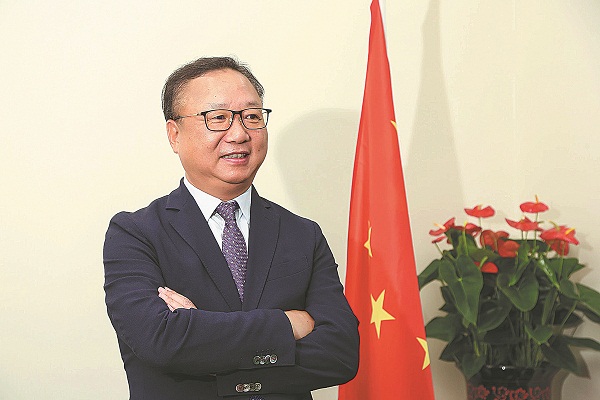
To maintain its competitiveness, China's textile and apparel sector plans to develop innovative fibers and focus on sustainable production while expanding its reach to markets covering the regions included in the Regional Comprehensive Economic Partnership agreement.
China’s textile and garment exports are currently under tremendous pressure owing to the ongoing Russia-Ukraine conflict. Uncertain global economic recovery and geopolitical issues have impacted growth, points out Sun Ruizhe, President, China National Textile and Apparel Council (CNTAC).
Recurrent COVID surges weakens consumer sentiment
Rising prices of commodities such as crude oil and cotton are impacting profits of MMF and cotton producers in the country. Recurrent COVID-19 waves and global divergence in prevention and control measures have weakened industrial production and logistics, affecting market confidence and consumer spending.
Covering 15 countries across Asia-Pacific, the RCEP agreement will facilitate a more comprehensive and deeper cooperation amongst industry leaders. It will protect the industry against the current economic and trade risks besides creating strategic value for the diversification of industrial and supply chains. Over 94 per cent textile and garment products from China will enjoy zero tariffs under the RCEP framework after a certain period. The number increases to over 95 per cent for textile and garment exports from other members to China.
Textile industry growth to slowdown in H1FY’22
China’s commitment to reduce tariffs, accumulative rule of origin and trade liberation and facilitation measures will enable it to strengthen ties with other countries such as Japan. The country reported 11.1 per cent rise in textile and garment exports to $72.25 billion in the first quarter, reveals CNTAC. Weak demand and supply chain issues will slowdown the industry’s growth in the first half of the year.
And as Sun Ruizhe, President, CNTAC says, the US Congress passed the H.R.6256 bill in December 2021 to prevent goods produced in China's Xinjiang Uygur autonomous region to be imported into the country, this move hit China’s cotton textile and garment exports.
New categories and brands emerge
CNTAC and its member companies have achieved significant breakthroughs in the development of new fibers, sustainable production and upgrading textile machineries. The rise in platform and content economy is leading to the development of traditional and new brands. Emergence of new categories is also facilitating the launch of new brands.
Besides integrating digitization in industrial development, China’s textile and garment companies will focus on developing new markets via new technologies and the country's dual-circulation development pattern.
Accounting for 54 per cent of China’s total exports, US, Association of Southeast Asian Nations (ASEAN), European Union and Japan were its four biggest export markets, reveal General Administration of Customs, China stats. Many domestic manufacturers benefitted from design, equipment and integration of the upstream and downstream industry chain despite facing fierce competition from rivals in Southeast Asia since the second half of 2021, affirms Deng Lijun, Chief Analyst, Northeast Securities.












